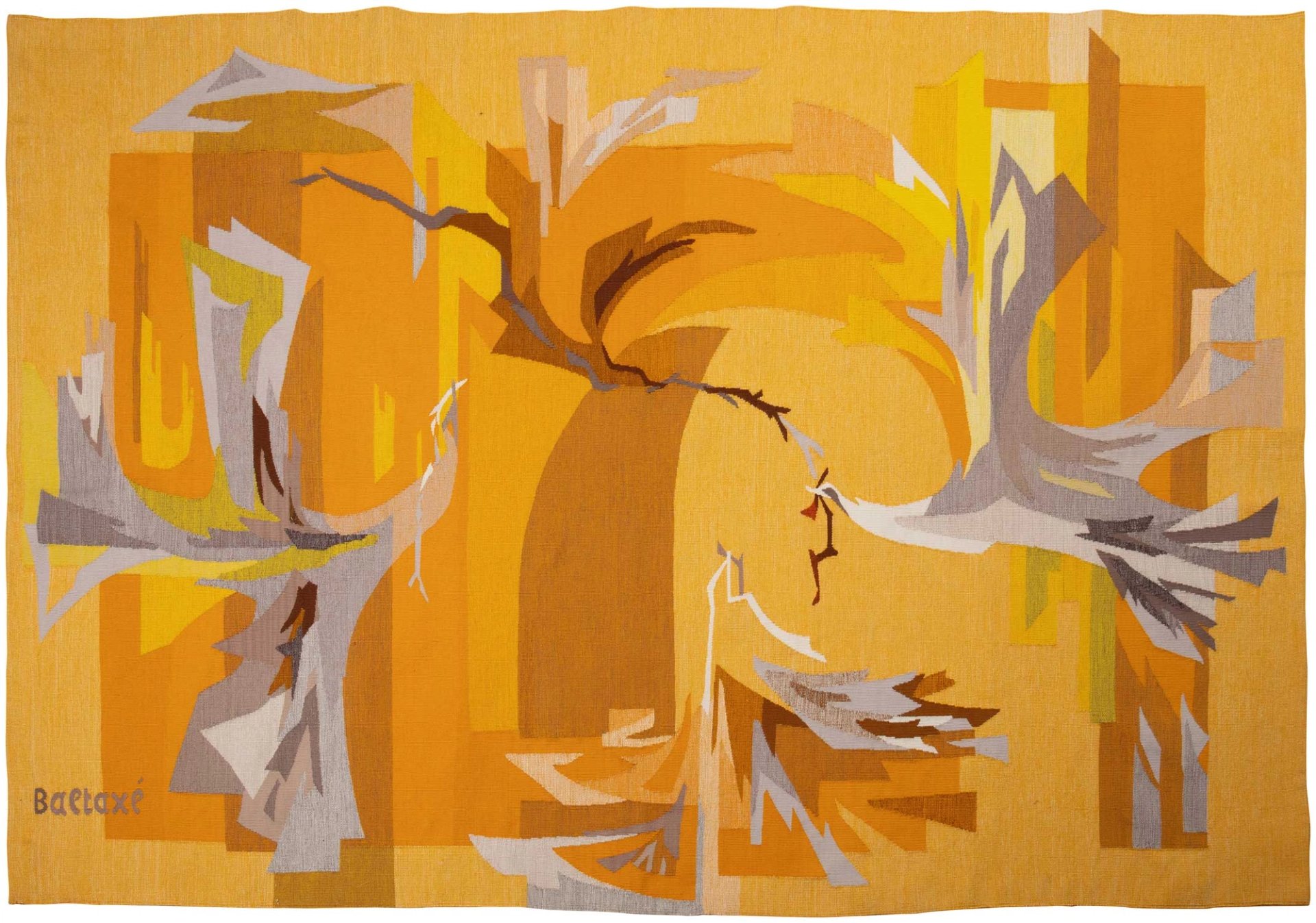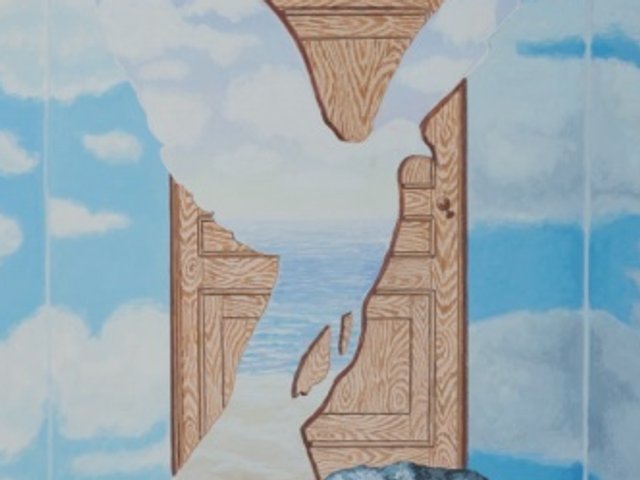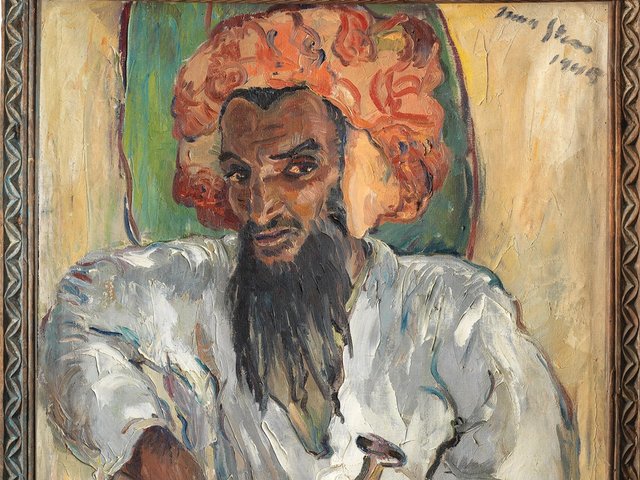Claes Oldenburg, Ghost Wardrobe for M.M. (1967)
The Kaspar König Collection: His Private Choice, Van Ham, Cologne, 1 October
Estimate: €100,000 to €150,000
This mixed media Claes Oldenburg work is one of around 100 offered from the collection of the storied German curator Kaspar König, who died in August (seep58). Oldenburg developed a close professional and personal relationship with König over 50 years, beginning in New York, where the curator had moved in the 1960s as the New York representative for Stockholm’s Moderna Museet. König curated a solo show of Oldenburg’s sculptures at that museum in 1966, and he later organised the artist’s Documenta 5 project, Mouse Museum, in 1972, for which the pair chose more than 300 of Oldbenburg’s works to be catalogued for a Mickey Mouse-shaped “museum”. König also included Oldenburg’s Giant Pool Balls in the first edition of Skulptur Projekte Münster in 1977, which is still installed in an artificial lake there.
This present work was made for a 1967 group show at Sidney Janis Gallery in New York, in memory of Marilyn Monroe, who had died five years previously. It was from this show that König bought the work. Oldenburg here presents a disembodied version of the film star. The three garments reference famous costumes worn by Monroe, including the white dress from The Seven Year Itch (1955) and the evening gown worn to the 1962 birthday celebration of US president John F. Kennedy Jr. Consisting of three metal hangers attached to water pipes, it is a modified version of Oldenburg’s first ever metal sculpture, Lipstick. It has been exhibited widely, including at New York’s Museum of Modern Art and the Guggenheim Bilbao.

Courtesy Christie’s
Willem de Kooning, Untitled XVIII (1986)
20th/21st Century Evening Sale, Christie’s, London, 8 October
Estimate: £4m to £6m
Untitled XVIII was included in the 1987 Whitney Biennial, where it was shown in one of the main galleries alongside works by Louise Bourgeois in a “European pocket”, said a review in The New York Times. It is quite typical of De Kooning’s later style, which saw him move away from more aggressive brushstrokes to ribbon-like ones executed on emptier, white backgrounds, in an aesthetic redolent of Matisse. De Kooning started his compositions during this period by projecting sections of earlier drawings onto a canvas, using charcoal to trace and then rearrange or fragment the patterns. In 2007, Christie’s sold De Kooning’s Untitled I (1981) for $19m, setting a record for a work by the artist from that decade. Since then, seven of the top ten prices for the artist have been realised at Christie’s. This painting comes from the collection of the English rock musician Eric Clapton, who has consigned a few other notable works to Christie’s over the years, including three monumental paintings by Gerhard Richter from his Abstraktes Bild series, one of which fetched $22m in New York in 2016.

Courtesy Sotheby’s
René Magritte, L’Incendie (1947)
Surrealism and its Legacy, Sotheby’s, Paris, 18 October
Estimate: €3m to €5m
Magritte’s market is showing no signs of cooling. The artist’s record was broken by Sotheby’s in London in 2022, when L’Empire des Lumières made £59.4m. Meanwhile Christie’s netted £33.6m for its own Magritte this March in London, all of which further cements his position as the most expensive Surrealist on the secondary market. Such prices inevitably raise those of his less coveted works, including this present lot. It was bought from the artist by the dealer Alexandre Lolas, who is credited with helping to establish Magritte as a household name. From Lolas it went to the New York cosmetics magnate Elizabeth Arden, who owned a number of avant-garde works by the artist. It was last seen at auction in November 1992 and has remained in the same Italian private collection ever since.

© Eléa Lefevre pour Art Digital Studio
Simone Baltaxé, Peace (1978)
Modern & Contemporary Middle East, Sotheby’s, London, 8 October
Estimate: £50,000 to £70,000
Though Simone Baltaxé was born and raised in France, she is best associated with the ‘golden age’ of Lebanese cultural production that took place between the late 1950s to mid 1970s, after she followed her husband there. In this period, she began creating tapestries upon meeting the weaver George Audi, at whose studio in Zouk, western Lebanon, she would make the works. Some of these are have been exhibited in major institutions across the Arab world, including the Sursock Museum in Beirut and Mathaf in Doha. Lebanon’s golden age would unfortunately come to a close with the outbreak of the Lebanese Civil War in 1975, which lasted until 1990. The war forced Baltaxé to move to Paris in 1977, and one year later she created this tapestry, Peace, which can be understood to be a direct critique of the conflict.





